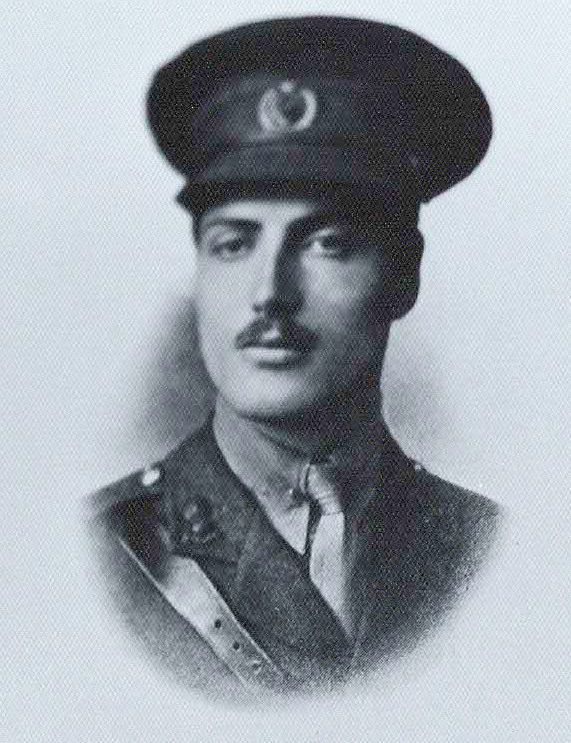
Figure 1. Lieutenant A.T.H. Blanch, M.C., R.E.
(Image from Wycliffe and the War)
Lieutenant
ARTHUR
THOMAS HENRY BLANCH, M.C.
Royal
Engineers
by
Lieutenant Colonel (Retired) Edward De Santis,
MSCE, PE, MinstRE
U.S. Army Corps of Engineers
(June 2023)

Figure 1. Lieutenant A.T.H. Blanch, M.C., R.E.
(Image
from Wycliffe and the War)
1. INTRODUCTION
Arthur Thomas Henry Blanch was born in January 1896 in Liverpool, Lancashire.[1] Prior to the Great War of 1914-1918 Blanch resided at Beechcroft, Rodborough, Stroud, Gloucestershire and attended Wycliffe College until 1914 when the war broke out. On 26 December 1914 Blanch enlisted as a Private in the 2/5th Battalion of the Gloucestershire Regiment.[2] This Territorial Force (T.F.) battalion was formed at Gloucester in September 1914 as a home service (“second line”) unit. In January 1915 it came under command of the 2nd South Midland Brigade of the 2nd South Midland Division at Northampton. The battalion moved to Chelmsford in April 1915.[3] While serving with this unit, Blanch presumably received recruit training to the extent that he was able to function as a private soldier in an infantry battalion.
On 2 October 1915 Private Blanch transferred from the Gloucestershire Regiment to the Inns of Court Officers Training Corps.[4] He had been with the Inns of Court OTC for about four months when in February 1916 a new system of training for officers was introduced, after which temporary commissions could only be granted if a man had been through an Officer Cadet unit. Entrants would have to be aged over 18 and a half, and to have served as a ranker or to have been with an OTC. Blanch’s service with the Gloucestershire Regiment qualified for training to receive a commission.[5]
The OTC training course lasted four and a half months. The Officer Cadet Battalion had an establishment of 400 cadets at any time (although this was subsequently raised to 600. More than 73,000 men gained infantry commissions after being trained in an OTB, with increasing numbers coming from ‘the ranks’ as the war went on.[6]
On 18 February 1916 Blanch entered the Signal Service Cadet School of the Inns of Court OTC. This school was located in Newark, Nottinghamshire. This training for the Royal Engineers Signal Service would ultimately determine the course of his service during the war.
2. COMMISSIONING, POSTINGS AND CAMPAIGN SERVICE
Arthur Blanch was appointed a Temporary 2nd Lieutenant in the Royal Engineers on 2 July 1916.[7] Following some additional training, probably at the School of Military Engineering in Chatham, Kent, he proceeded to France in October 1916 and was posted to the 63rd (Royal Naval) Division.
During the research for Blanch’s military service, no definitive information could be found regarding the specific unit that he served with. The 63rd (Royal Naval) Division was supported by four companies of the Royal Engineers. The companies were:
· The 247th Field Company,
· The 248th Field Company,
· The 249th Field Company, and
· The 63rd Divisional Signals Company
The field companies were originally numbered No. 1 Company, No. 2 Company and No. 3 Company when they joined the division before embarkation for Gallipoli. On 1 February 1917, the companies were transferred to the Corps of Royal Engineers and were redesignated, respectively, as shown above.[8]
Based on Lieutenant Blanch’s training at the Signal Service Cadet School and the citation for the award of his Military Cross in 1918, it seems most likely that he had served in the 63rd Divisional Signal Company, R.E. while in France and Flanders. This unit served in many actions during the war and as will be seen, Blanch distinguished himself very well in those actions.
In 1914, a divisional signal company consisted of a headquarters and four sections. No. 1 Section was made up of three cable detachments, each possessing 10 miles of cable and capable of establishing three telegraph offices (‘base’, ‘intermediate’ and ‘travelling’), as well as the staff which manned the divisional signal office. Also possessing four mounted orderlies, eight cyclists and nine motorcycle despatch riders, No. 1 Section had the primary responsibility of establishing communications between divisional and brigade headquarters, and between neighboring divisions. Sections 2, 3 and 4 were each allocated to the infantry brigades, charged principally with connecting brigade and battalion headquarters to one another, and each comprising 1 officer and 26 other ranks. In all, the divisional signal company totaled 5 officers and 170 other ranks. While it is not known to which section of the company Blanch was assigned, based on the citation for the award of his Military Cross (presented below), it is most likely that he served in Section 2, 3 or 4 providing communication between brigade and battalion headquarters.
The 63rd Division had been in Gallipoli early in the war. When the Gallipoli peninsula was evacuated by the British, the division was retained to hold the islands of Lemnos, Imbros and Tenedos. By this time, very few men with sea service remained. The division transferred from the authority of the Admiralty to the War Office on 29 April 1916 and was redesignated as the 63rd (Royal Naval) Division on 19 July 1916. It moved to France, arriving in Marseilles during the period 12-23 May 1916, after which it remained on the Western Front for the rest of the war and took part in the following engagements during the period that Branch served in the division:
The Battle of the Ancre (13-18 November 1916)[9]
After the evacuation of Gallipoli, the Royal Naval Division moved to France where it participated in the final phase of the Battle of the Somme, advancing along the River Ancre to capture Beaucourt. The division had four objectives during the Battle of Ancre, 1) the German front trench, 2) then the road to Beaucourt station. The road ran along a fortified ridge. The next objective 3) was a trench which lay beyond the road, around the remains of Beaucourt on its south-west edge and the final objective 4) was beyond Beaucourt, where the division was to consolidate.
The plan was for the battalions to leap-frog towards the final objective. The 1st Royal Marine Light Infantry (RMLI), Howe, Hawke and Hood battalions were assigned objectives 1) and 2), the 2nd Royal Marine Light Infantry, Anson, Nelson and Drake battalions were to take objectives 3) and 4). When the battle began in the early hours of 13 November, platoons from the 1st RMLI crawled across no-man's land towards the German line. A creeping barrage was fired by the British artillery but many casualties were suffered in no-man's land, about 50 percent of the total casualties occurring before the first German trench had been captured. German artillery-fire and machine-gun fire was so effective that all company commanders of 1st RMLI were killed before reaching the first objective.
The German trenches had been severely damaged by the British bombardment, the attackers lost direction and leap-frogging broke down. The commander and second-in-command of Drake Battalion were killed and Hawke battalion lost its commander and several company commanders. Freyberg, having been promoted to temporary lieutenant-colonel and command of Hood Battalion, led it to the Green Line and pressed forward with the remaining men of Drake Battalion. The station road served as a landmark and allowed the attackers to orient themselves and re-organize the attack. The next creeping barrage began on time at 0730 hours, and led the British towards Beaucourt Station. Nelson, Hawke and Howe battalions had suffered many casualties; Lieutenant-Colonel Burge, Commanding Officer of Nelson Battalion, was killed while attacking a fortified section of the Dotted Green Line and Lieutenant-Colonel Wilson D.S.O., Commanding Officer of Hawke Battalion, was severely wounded attacking the same objective. Lieutenant-Colonel Saunders, Commanding Officer of Anson Battalion, was killed early in the battle but Anson Battalion still managed to capture the objective and advance to the next line, after making contact with the 51st Highland Division to its left. By 2230 hours Beaucourt had been captured.
With the attackers losing direction, leap-frogging breaking down and many senior officers being killed or wounded, communication between the battalions, brigades and division headquarters were disrupted many times. Blanch’s men certainly were busy trying to re-establish communications between these units, a formidable task requiring considerable effort on his part.
Action at Miraumont (January – March 1917)
On the north bank of the Ancre, the 63rd Division attacked on 17 February, with the 188th Brigade and two battalions of the 189th Brigade, to capture 700 yards of the road north from Baillescourt Farm towards Puisieux, to gain observation over Miraumont and form a defensive flank on the left back to the existing front line. Two battalions attacked with a third battalion ready on the right flank, to reinforce them or to co-operate with the 18th Division between the Ancre and the Miraumont road. On the northern flank two infantry companies, engineers and pioneers were placed to establish the defensive flank on the left. The divisional artillery and an army field brigade with 54 × 18-pounder field guns and 18 × 4.5-inch howitzers provided covering fire, with three field batteries from the 62nd Division further north, to place a protective barrage along the northern flank. The darkness, fog and mud were as bad as on the south bank but the German defence was far less effective. The creeping barrage moved at 100 yards in four minutes, slower than the rate on the south bank and the Germans in a small number of strong-points were quickly overcome. The objective was reached by 0640 hours and the defensive flank established; the last German strong-point being captured at 1050 hours. A German counter-attack the next day was stopped by artillery-fire. The 63rd Division lost 549 casualties and the three attacking divisions took 599 prisoners. The 63rd Divisional Signal Company lost five men during this period (See Annex A).
The Second Battle of the Scarpe (Arras)(23-24 April 1917)
From 9 April to 16 May 1917, British troops attacked German defences near the French city of Arras on the Western Front. The British achieved the longest advance since trench warfare had begun, surpassing the record set by the French Sixth Army on 1 July 1916. The British advance slowed in the next few days and the German defence recovered. The battle became a costly stalemate for both sides and by the end of the battle, the British Third Army and the First Army had suffered about 160,000 casualties and the German 6th Army about 125,000.[10] The 63rd Division’s participation in this action lasted only from 23 – 24 April.
The Battle of Arleux (28-29 April 1917)
The principal objective of this battle was to tie down German reserves to assist the French offensive against the plateau north of the Aisne traversed by the Chemin des Dames. Haig reported,
“With a view to economizing my troops, my objectives were shallow and for a like reason and also in order to give the appearance of an attack on a more imposing scale, demonstrations were continued southwards to the Arras-Cambrai Road and northwards to the Souchez River.”
Although the Canadian Corps had taken Vimy Ridge, difficulties in securing the south-eastern flank had left the position vulnerable. To rectify this, British and Canadian troops launched an attack towards Arleux on 28 April. The village was captured by Canadian troops with relative ease but the British troops advancing on Gavrelle met stiffer resistance. The village was secured by early evening but when a German counter-attack forced a brief retreat, elements of the 63rd (Royal Naval) Division were brought up as reinforcements and the village was held. Subsequent attacks on 29 April failed to capture more ground. The attacks achieved the limited objective of securing the Canadian position on Vimy Ridge but casualties were high and the result was disappointing.[11]
As elements of the 63rd (Royal Naval) Division took a prominent part in the Battle of Arleux, Branch was certainly busy establishing communication between elements of the division. In the London Gazette of 18 May 1917 he was Mentioned in Despatches for his part in the action.
The Battle of Passchendaele (26 October – 10 November 1917)
The 63rd Division arrived at Ypres just before the Second Battle of Passchendaele. On 26 October, immediately to the north of the Canadian Corps, the supporting attack by XVIII Corps involved one brigade each from the 63rd and 58th Divisions. The 188th Brigade, of the 63rd Division quickly captured Varlet Farm and Banff House. The center of the attack was held up on the road between Bray Farm and the village of Wallemolen and the troops dug-in near Source Trench. As darkness fell, Banff House was abandoned and the line reformed at Berks House, leaving Banff House and Source Trench the only part of the first objective not occupied. On 30 October, the 63rd Division infantry were caught by German artillery fire at their jumping-off line and made only slight progress in deep mud against German machine-gun fire. The infantry was unable to reach their rendezvous with the Canadians, leaving their troops at Source Farm and Vapour Farm in precarious positions. Two companies later advanced through the Canadian sector to capture Source Trench but were only able to reinforce the Canadian outpost at Source Farm, then form a defensive flank to Vapour Farm. The 63rd Division had 3,126 casualties from 26–31 October. The division was able to close up to the Paddebeek by attacking at night from 1/2–4/5 November, a method which took more ground than its attacks in October, for a loss of 14 killed and 148 wounded.
On 2 January 1918, during a period between major battles on the Western Front, Temporary 2nd Lieutenant Blanch was promoted to the rank of Temporary Lieutenant.[12]
By 1918, the organization of the divisional signal companies was changed and was expanded to 15 officers and 400 other ranks. In the process, a fourth cable detachment had been added in 1915 for the purpose of laying artillery communications, before the headquarters of the Royal Artillery Signal Section and the field brigade artillery sub-sections were absorbed in early 1917. Finally, in 1918 No. 5 (Machine Gun) Section was added, which consisted of 1 officer and 20 other ranks drawn largely from the Machine Gun Corps, and the personnel within the divisional signal company headquarters increased from 1 officer and 44 men in 1914 to 3 officers and 173 men in 1918. Again, Blanch’s specific unit is not known.
The Battle of St. Quentin (21-23 March 1918)
The German Operation Michael was a major military offensive that began the German Spring Offensive on 21 March 1918. It was launched from the Hindenburg Line, in the vicinity of Saint-Quentin, France. Its goal was to break through the Allied lines and advance in a north-westerly direction to seize the Channel Ports, which supplied the British Expeditionary Force (BEF) and to drive the BEF into the sea. Two days later General Erich Ludendorff, the chief of the German General Staff, adjusted his plan and pushed for an offensive due west, along the whole of the British front north of the River Somme. This was designed to first separate the French and British Armies before continuing with the original concept of pushing the BEF into the sea. The offensive ended at Villers-Bretonneux, to the east of the Allied communications center at Amiens, where the Allies managed to halt the German advance. The German Army had suffered many casualties and was unable to maintain supplies to the advancing troops.
The Battle of Bapaume (24-25 March 1918)
In the late evening of 24 March, after enduring unceasing shelling, Bapaume was evacuated and then occupied by German forces on the following day. The whole of the British Third Army had swung back, pivoting on its left, so that, although the British VI and XVII Corps were little behind their positions of the 21 March, the right of British V Corps had retired 17 miles. The new line, consisting partly of old trenches and partly shallow ones dug by the men themselves, started at Curlu on the Somme and ran past places well known in the battle of the Somme, the Bazentins and High Wood, and then extended due north to Arras. It was, for the most part continuous, but broken and irregular in the center where some parts were in advance of others; and there were actually many gaps... Further, the men of the right and center corps ... were almost exhausted owing to hunger and prolonged lack of sleep.
After three days the infantry was exhausted and the advance bogged down, as it became increasingly difficult to move artillery and supplies over the Somme battlefield of 1916 and the wasteland of the 1917 German retreat to the Hindenburg Line. German troops had also examined abandoned British supply dumps which caused some despondency, when German troops found out that the Allies had plenty of food. Fresh British troops had been hurried into the region and were moved towards the vital rail center of Amiens.[13]
The Battle of the Ancre (5 April 1918)
An attempt by the Germans to renew the offensive on 5 April failed and by early morning, the British had forced the enemy out of all but the south-eastern corner of the town. German progress towards Amiens had reached its furthest westward point and Ludendorff terminated the offensive.
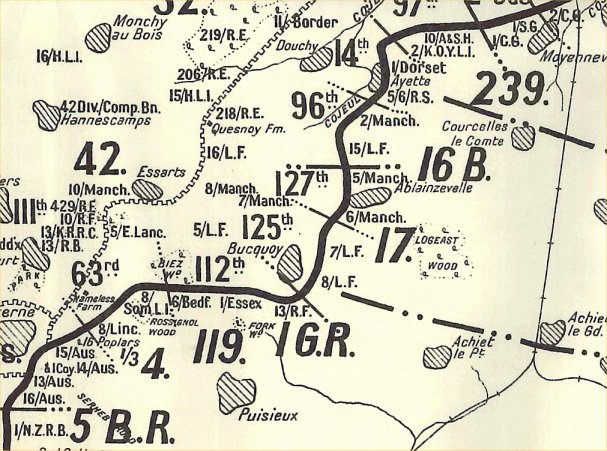
Figure 2. Battle of the Ancre, 5 April 1918, Showing the
Position of the 63rd Division.
(Image
courtesy of Wikipedia)
On 26 July 1918, Temporary Lieutenant A.T.H. Blanch, R.E. was awarded the Military Cross. The citation for his award was published in the London Gazette of this date and reads as follows:
“For conspicuous gallantry and devotion to duty. During a withdrawal, he displayed the greatest courage and resource in maintaining communication between battalions and brigade headquarters. Regardless of heavy shelling, he was constantly out with the linesman and visual signallers, and it was mainly due to his splendid efforts and example that the situation was kept well in hand.”
Clearly, as the citation alludes to “a withdrawal,” the citation must refer to one of the withdrawals made by his division during one of the German attacks during their spring offensive. The citation shows that he was up front with his men, sharing their dangers and doing all that he could to maintain the vital communications between major units of the division.
The Battle of Albert (21-23 August 1918)
The Battle of Albert was the third battle by that name fought during the war following the First Battle of Albert (1914) and the Second Battle of Albert (1916), with each of the series of three being fought roughly two years apart. This smaller third battle was significant in that it was the opening push that would lead to the Second Battle of the Somme and involved the Australian Corps. This attack opened the advance; the main thrust was launched by the Third Army along with support from the Fourth Army. The Second Battle of Bapaume, from 25 August to 3 September, was a continuation of this battle.[14]
The Battle of Drocourt-Queant (2-3 September 1918)
At 0500 hours on 2 September 1918, Canadian and British forces attacked the Drocourt–Quéant Line supported by tanks and aircraft. In twilight, the Canadian 1st Division attacked the line south-eastwards, on the extreme right, south of the Arras–Cambrai road, The Canadian 4th Division attacked in the center between Dury and the main road and the British 4th Division attacked south of the River Sensee.
Seven Canadians were awarded Victoria Crosses that day. The next day the Germans retreated to the Hindenburg Line with the Allies taking many prisoners. The Canadian and British troops then moved on to their next battle, the Battle of the Canal du Nord.
The Battle of Canal du Nord (27 Sep – 1 October 1918)
The Battle of Canal du Nord was part of the Hundred Days Offensive. The battle took place in the Nord-Pas-de-Calais region, along an incomplete portion of the Canal du Nord and on the outskirts of Cambrai. To prevent the Germans from sending reinforcements against one attack, the assault along the Canal du Nord was part of a sequence of Allied attacks at along the Western Front. The attack began the day after the Meuse-Argonne Offensive commenced and two days before the Battle of St. Quentin Canal.
The attack took place along the boundary between the British First Army and Third Army, which were to continue the advance started with the Battle of the Drocourt-Quéant Line, Battle of Havrincourt and Battle of Epehy. The First Army was to lead the crossing of the Canal du Nord and secure the northern flank of the British Third Army as both armies advanced towards Cambrai. The Third Army was also to capture the Escaut (Scheldt) Canal, to support the Fourth Army during the Battle of St. Quentin Canal.[15] The 63rd Divisional Signal Company lost six men during this battle, the largest number lost in any other engagement (See Annex A).
The Battle of Cambrai (8-9 October 1918)
The Battle of Cambrai (also known as the Second Battle of Cambrai) was a battle between troops of the British First, Third and Fourth Armies and German forces during the Hundred Days Offensive. The battle incorporated many of the newer tactics of 1918, in particular the use of tanks. The battle witnessed over 300 tanks taking part, gaining considerable ground in less than 36 hours, with about 2,000 more British casualties than German, which was light relative to earlier phases of the war.[16]
The Battle of Cambrai was the last action in which Blanch and his unit were involved. He remained in France for about five months after the war ended and returned home in April of 1919.
3. MEDALS, AWARDS AND DECORATIONS
For his service during the Great War Blanch received the Military Cross, the British War Medal and the Victory Medal with oak leaf for his Mention in Despatches.
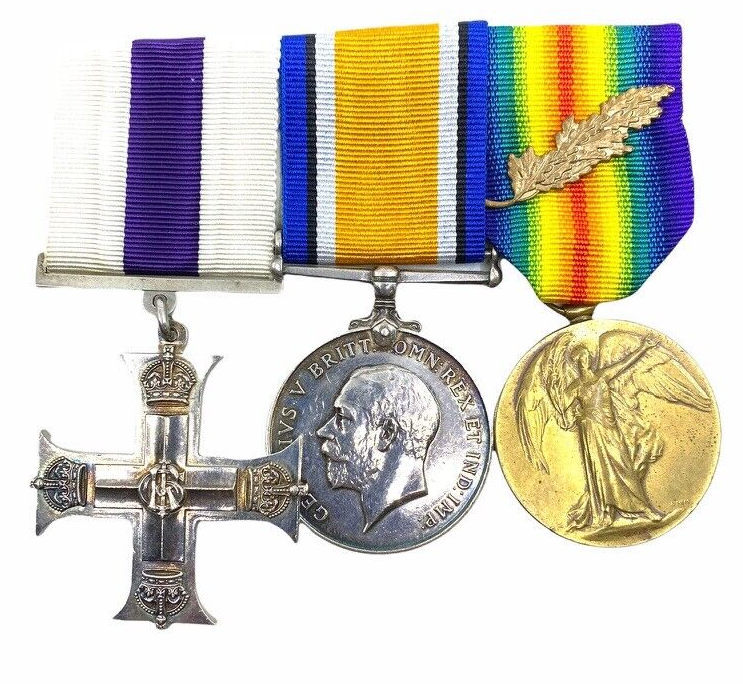
Figure 3. The Military Cross, British War Medal and Victory
Medal with M.I.D.
(Image courtesy of Wikipedia)
NOTE: The medals shown above are not the medals of Lieutenant Blanch. The image is presented here for illustrative purposes only.
By the account of his service, Blanch was authorized the three medals shown above. His Medal Index Card is rather strange as it shows the stamped boxes for the STAR, BRITISH and VICTORY in the upper right-hand corner of the card, but it does not show entries for the ROLL or the PAGE for the issue of the British War Medal and Victory Medal. His Military Cross (M.C.) is noted next to the initials of his name on line (B). By the end of the war Blanch had served in eleven major battles on the Western Front.
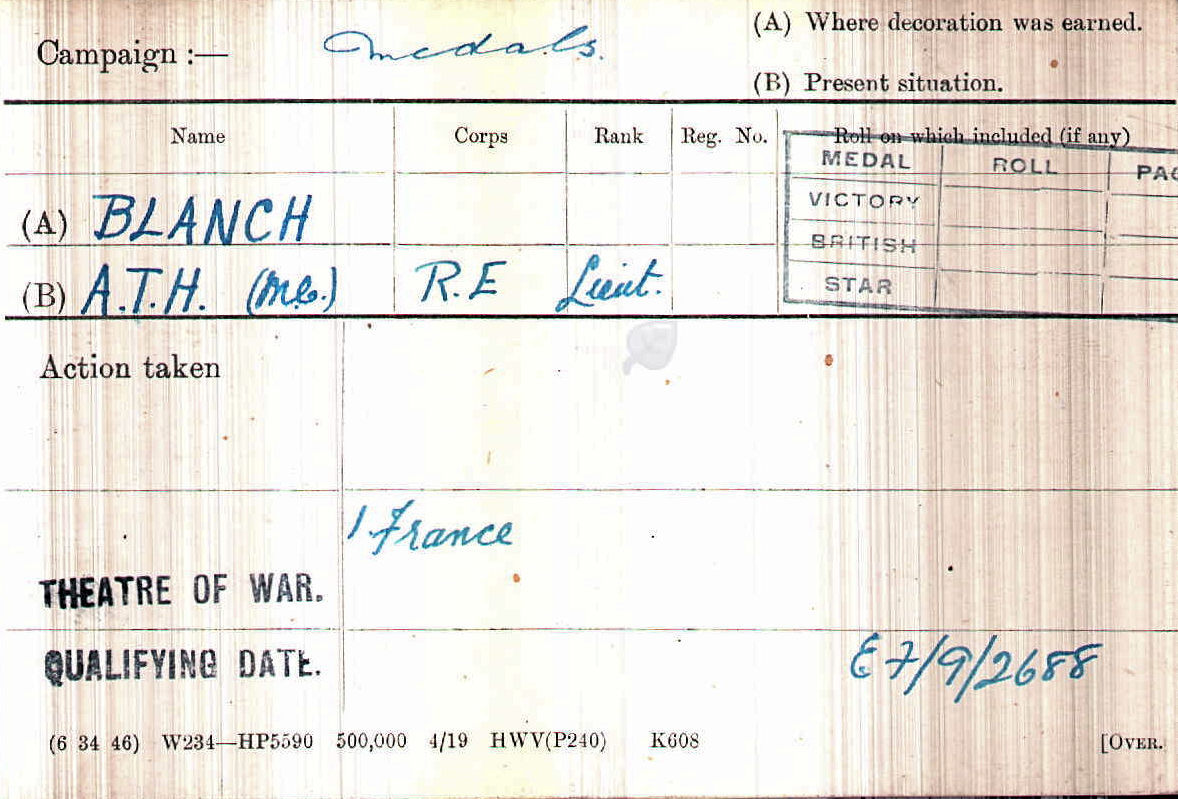
Figure 4. The Medal Index Card of Lieutenant A.T.H. Blanch,
R.E.
(Image courtesy of Ancestry.com)
4. POST SERVICE LIFE
Following his demobilization from the Army Arthur Blanch matriculated in Christ College, Oxford University in 1919. He married Frances Audrey Brown in the Parish Church of St. Pancras, London on 25 April 1924.
In 1947 he resided at 140 Westbourne Grove, London and in 1955 his residence was at 128 Westbourne Grove Road. In both Electoral Registers he is listed alone; that is, his wife is not listed with him at those addresses.
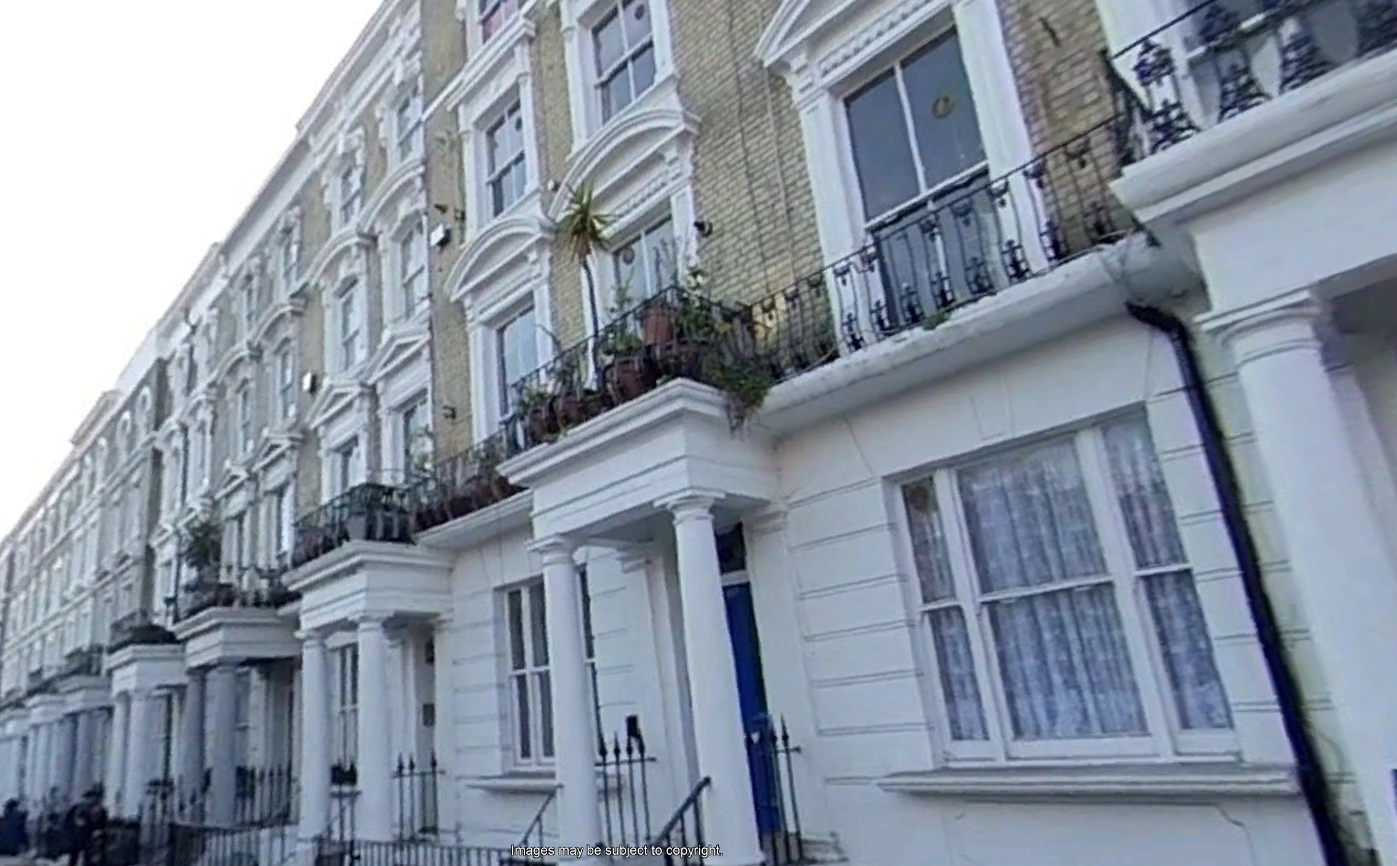
Figure 5. Westbourne Grove, London.
(Image
courtesy of Google Earth)
Arthur Thomas Henry Blanch died in Surrey in the first quarter of 1973 at the age of 77. Unfortunately no family tree exists for him on Ancestry.com, so no additional information pertaining to his life could be found.
ANNEX
A.
Casualties of the 63rd Divisional
Signal Company, Royal Engineers From 1917 to 1919
Name |
|
Rank |
|
Date of Death |
Annison, Arthur Liddiard |
244353 |
Corporal |
Unk |
17 Jan 1917 |
Palmer, George William |
207583 |
Sapper |
KIA |
3 Feb 1917 |
Shenton, Francis Charles |
207477 |
Sapper |
DOW |
4 Feb 1917 |
Carter, Sydney |
207553 |
Sapper |
KIA |
17 Feb 1917 |
Seddon, Robert |
207487 |
Sapper |
KIA |
20 Feb 1917 |
Mitchell, Victor James |
207582 |
Sapper |
DOW |
27 Dec 1917 |
Chapman, Frederick Thomas |
207449 |
Sapper |
KIA |
23 Mar 1918 |
Pordage, Sidney |
241555 |
Sapper |
DOW |
30 Mar 1918 |
Jones, Samuel Henry |
151832 |
Sapper |
DOW |
22 May 1918 |
Ford, Wavil |
19930 |
Driver |
Died |
24 May 1918 |
Farrington, Leonard |
207640 |
Sapper |
DOW |
1 Sep 1918 |
Douglas, Charles Frederick |
221809 |
Driver |
DOW |
2 Sep 1918 |
Newbound, Lewis Edward |
321828 |
Pioneer |
KIA |
4 Sep 1918 |
Andrews, Albert Harold |
207471 |
Sapper |
KIA |
27 Sep 1918 |
Billett, Percy Alfred |
207443 |
Sapper |
KIA |
27 Sep 1918 |
Ladbrooke, Horace Stanley |
207627 |
Corporal |
KIA |
27 Sep 1918 |
Upton, Frederick Charles |
207461 |
Corporal |
DOW |
27 Sep 1918 |
Wilks, Frank Walter |
210901 |
Lance Corpl. |
KIA |
29 Sep 1918 |
Barker, Arthur James |
357020 |
Driver |
KIA |
30 Sep 1918 |
Browning, Alec |
301691 |
Pioneer |
KIA |
8 Oct 1918 |
Fow, Henry Scholey |
546931 |
Sapper |
Died |
11 Oct 1918 |
Beeman, Henry |
207493 |
Sapper |
DOW |
15 Oct 1918 |
Farne, W. |
169884 |
Driver |
Died |
2 Nov 1918 |
Muir, Thomas |
207570 |
Sapper |
Died |
4 Feb 1919 |
Bunyard, H. |
207507 |
Sapper |
Died |
29 Oct 1919 |
Legend: KIA – Killed in Action; DOW – Died of Wounds; Died – of disease or accidentally killed.
The following is a statistical analysis of these deaths by various categories:
1. Total Company Casualties from all Causes: 25
2. Deaths by Rank
Corporals: 3
Lance Corporals: 1
Sappers: 15 (60%)
Drivers: 4
Pioneers: 2
3. Deaths by Category
Killed in Action: 11 (44%)
Died of Wounds: 8 (32%)
Died of Disease or Accident: 5 (20%)
Cause of Death Unknown: 1
3. Deaths by Year
1917: 6
1918: 17 (68%)
1919: 2
4. Deaths by Battle or Campaign
Canal du Nord (27 Sep – 1 Oct): 6 of 25: 24%
REFERENCES:
Books
The Inns of Court Officers Training Corps During the Great War, London, undated.
Oxford University Roll of Service. Oxford, 1920.
University of London Officers Training Corps Roll of War Service, 1914-1919, London, 1921, p. 28.
Wycliffe and the War: A School Record, 1923.
Civil Documents
Marriage Certificate, St. Pancras Church, 25 April 1924.
Electoral Registers, 1947, 1948, and 1955.
Civil Death Index, 1916-2007, p. 107.
Digital Database
Soldiers Died in the Great War. The Naval and Military Press Ltd., Dallington, East Sussex, 1998.
Internet Web Sites
The Long, Long Trail: Gloucestershire Regiment.
The Long, Long Trail: Soldier Training in the British Army.
The Long, Long Trail. 63rd (Royal Naval) Division.
https://www.longlongtrail.co.uk/army/order-of-battle-of-divisions/63rd-royal-naval-division/
Wikipedia: Battle of the Ancre
https://en.wikipedia.org/wiki/Battle_of_the_Ancre
Wikipedia: Second Battle of the Scarpe (Arras)
https://en.wikipedia.org/wiki/Battle_of_Arras_(1917)
Wikipedia: Battle of Arleux
https://en.wikipedia.org/wiki/Battle_of_Arras_(1917)
Wikipedia: Battle of Passchendaele
https://en.wikipedia.org/wiki/Battle_of_Passchendaele
Wikipedia: Operation Michael.
https://en.wikipedia.org/wiki/Operation_Michael
Wikipedia: Battle of Bapaume.
https://en.wikipedia.org/wiki/Operation_Michael#First_Battle_of_Bapaume
Wikipedia: Battle of the Ancre.
https://en.wikipedia.org/wiki/Operation_Michael#Battle_of_the_Ancre,_5_April
Wikipedia: Battle of Albert (1918).
https://en.wikipedia.org/wiki/Battle_of_Albert_(1918)
Wikipedia: Battle of Drocourt-Queant.
https://en.wikipedia.org/wiki/Battle_of_Drocourt-Qu%C3%A9ant_Line
Wikipedia: Battle of Canal Du Nord.
https://en.wikipedia.org/wiki/Battle_of_the_Canal_du_Nord
Wikipedia: Battle of Cambrai
https://en.wikipedia.org/wiki/Battle_of_Cambrai_(1918)
London Gazette
Supplement to the London Gazette, 18 May 1917, p. 4877.
Supplement to the London Gazette, 13 February 1918, p. 2009.
Supplement to the London Gazette, 26 July 1918, p. 8777.
Periodicals
Battle Honours of the Royal Engineers. The Royal Engineers Journal. The Institution of Royal Engineers, Chatham, Kent, 1925-1932.
ENDNOTES:
[1] University of London OTC.
[2] Wycliffe and the War.
[3] The Long, Long Trail: The Gloucestershire Regiment.
[4] Wycliffe and the War.
[5] The Long, Long Trail: Soldier Training.
[6] Ibid.
[7] London Gazette, 1 July 1916.
[8] The Long, Long Trail. 63rd (Royal Naval) Division.
[9] Ibid.
[10] Wikipedia: Battle of Arras (1917).
[11] Ibid.
[12] London Gazette, 13 February 1918.
[13] Wikipedia: Battle of Bapaume.
[14] Wikipedia: Battle of Albert.
[15] Wikipedia: Battle of Canal Du Nord.
[16] Wikipedia: Battle of Cambrai.